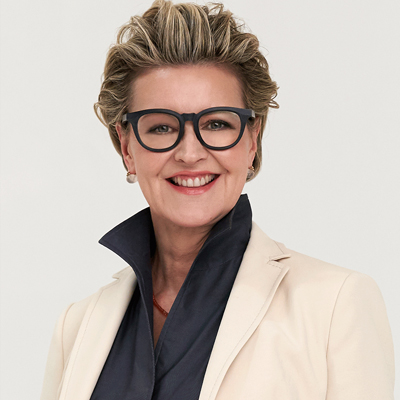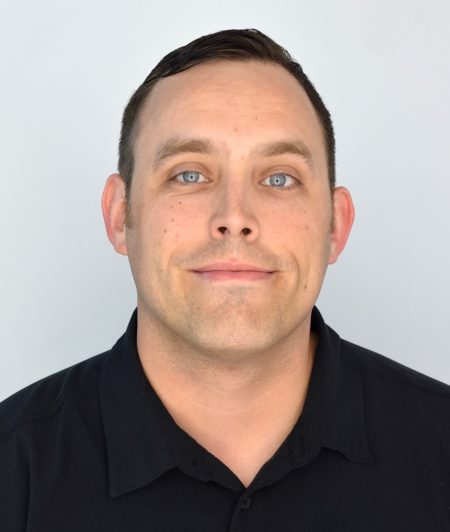Personal Style and the Career Search: A Hidden Benefit of the Foster MBA Program
Audrey Beaulac, Style Strategist and Career Management trainer, provides advice to full-time Foster MBA students looking to develop their signature style during a career search. We talked to Audrey about how insights and recommendations for professional style has changed over the years.

Why is the topic of personal style so important in the workplace now?
The world of workwear is shifting. Where there used to be restrictive standards of dress, we currently have companies going with appearance suggestions.
Now more than ever, we want to show up authentically to create trust and rapport. Finding that true authenticity in our style requires a methodical way to gather information to notice our unique distinctions.
Identifying our style has always been important for differentiating. And it’s not just a competitive advantage; it’s also needed in collaboration. Signaling an understanding of the industry culture has impact. All things equal, appearance is the tiebreaker.
Why Distinctions?
Style development is about a constant rotation of three steps: Identify, Define and Refine. The MBA students are currently Identifying their style. They’re becoming aware that certain colors, silhouettes, and details “fit” them better than others. Giving some cohesion to that information gives them stronger editing tools to create a consistent look. This consistency turns into a reflection of purpose. Ultimately, Refinement becomes a Style Signature: an individual’s indelible appearance that radiates their unique personality. Foster’s MBA Career Center has generously included my style assessment tool, The Profile, in their supplemental curriculum. The Profile is designed to guide the individual through a personal style profile.
What questions do the Foster MBA students ask?
The first question is about how to dress for particular industries, such as tech, healthcare, consulting, finance, and more. Because of shifting industry standards, it’s more about the company culture and how it dresses. It’s important for the students to understand that as we become a more visual society, our appearance is even more of a reflection of our own standards. Doing a personal assessment of style characteristics creates a foundation on which to build more specific style strategies. Once those characteristics are determined, it creates criteria to explore the context of our environment and career trajectory. Using The Profile, students learn how they relate to the foundations of style development: consistency, efficiency, and value-driven purchasing decisions.
Students’ additional questions are wide-ranging. Some have to do with particular issues such as hair styles, eyewear frames, length of particular pieces, shoes – lots of shoe questions. Others have to do with best shopping practices and where to find good clothes for good prices. From there: How do you style an outfit? How do you develop a wardrobe plan? How do you pack for travel?
I received customized suggestions from Audrey that I was able to implement immediately ranging from hair style, clothing colors, and suit styles for work.
— Bryan Young, Foster MBA 2019

How did you come to work with the MBA Program at Foster School of Business?
It went from a fashion show inquiry to a presentation to weekly office hours during a Spring semester. Feedback showed that the MBA students wanted their own experience of style development. When talking about style, one-to-one is always more productive. We have now structured it so that Foster MBA students can sign up for 20-minute individual appointments. This year I had the privilege of being included as a Foster MBA Career Management trainer.
What is your background? What drew you to the world of style?
My mission is to empower individuals to realize that style development is a mindset and lifelong skill that can be cultivated. Clothing and personal effects consume a major portion of our income and time. Spending too much time and energy ruminating about what to wear distracts from real goals and progress. Once you know what really works for you to put your best foot forward, all other decisions follow easily.
As someone who’s sewn since my little fingers figured out how to put a thread through the eye of a needle, I’ve spent my career in the world of apparel, from working in retail while in university to being a costumer at Yale School of Drama, to Director of Wardrobe for Hyatt Hotels and Resorts, all of which led me to develop my own consulting practice specializing in directing the developing Style Signatures.
My clients know the world defines them by their style. They learn about their style attributes in order to strategize and maximize their influence.
MBA students are just starting that style evolution by identifying their own style characteristics. They’re in a transitional moment where they’re going to push into a new perspective of themselves. Clarifying that direction with clothing that fits the vision of where they’re going is powerful in shaping that direction.
